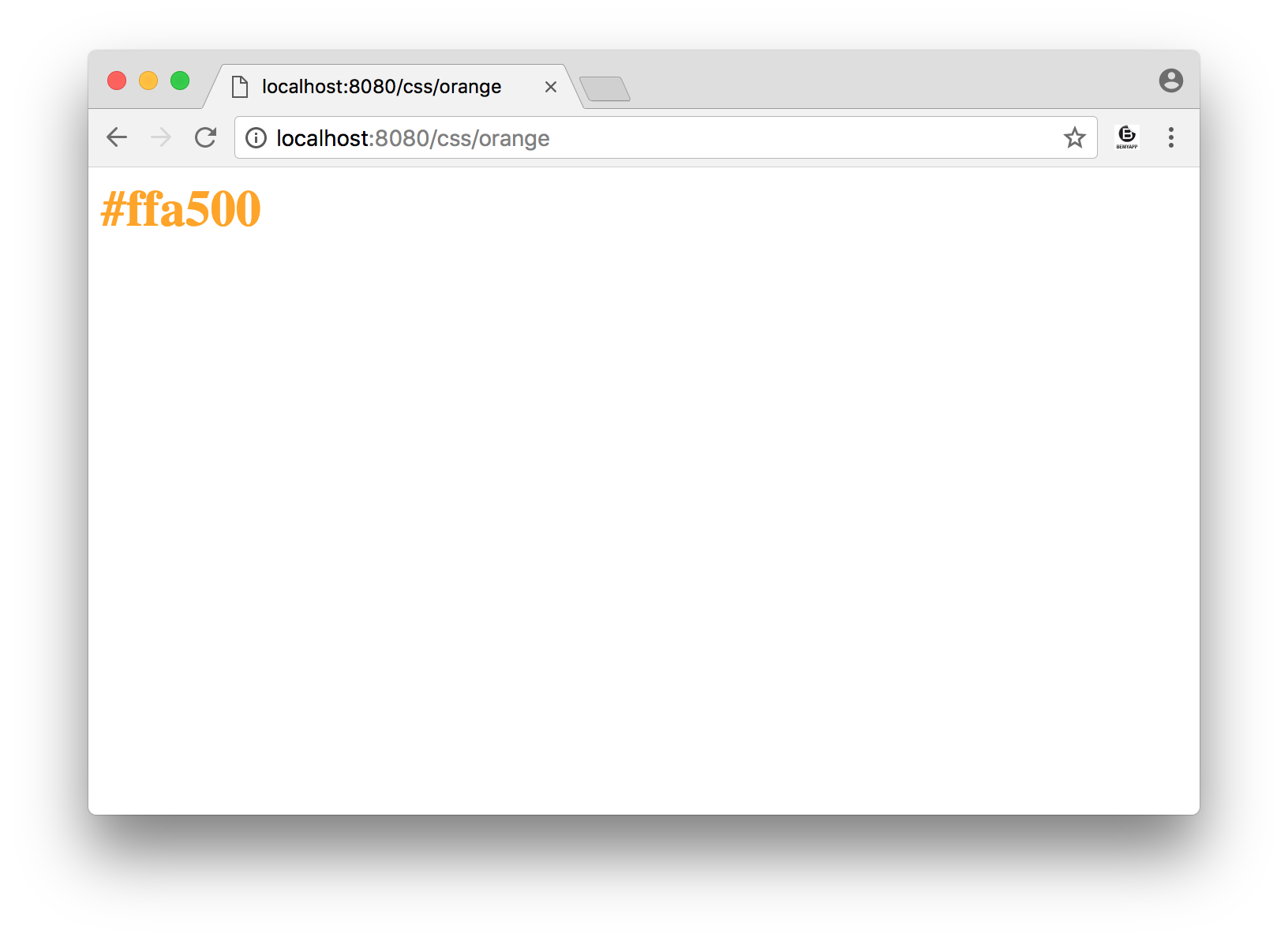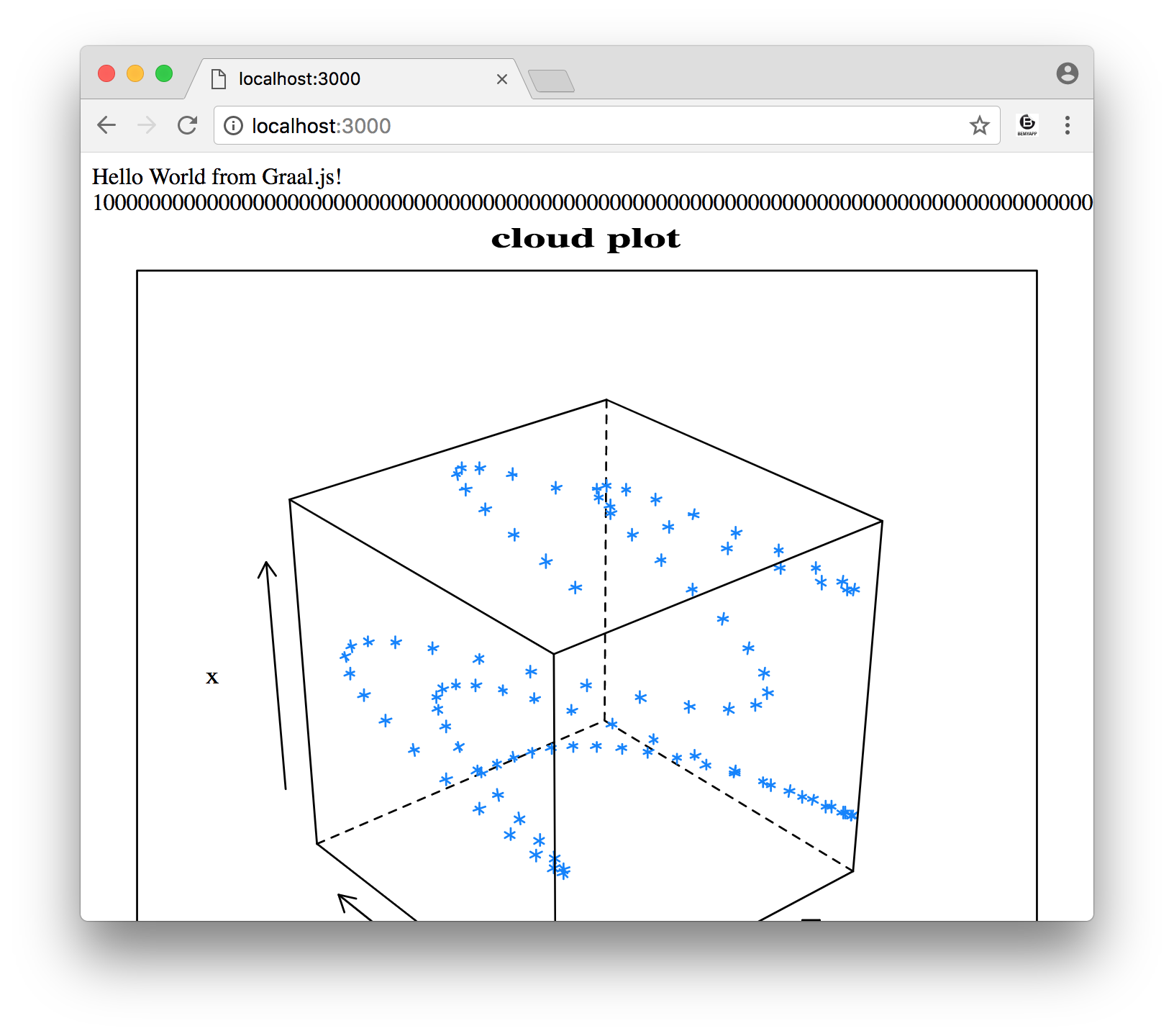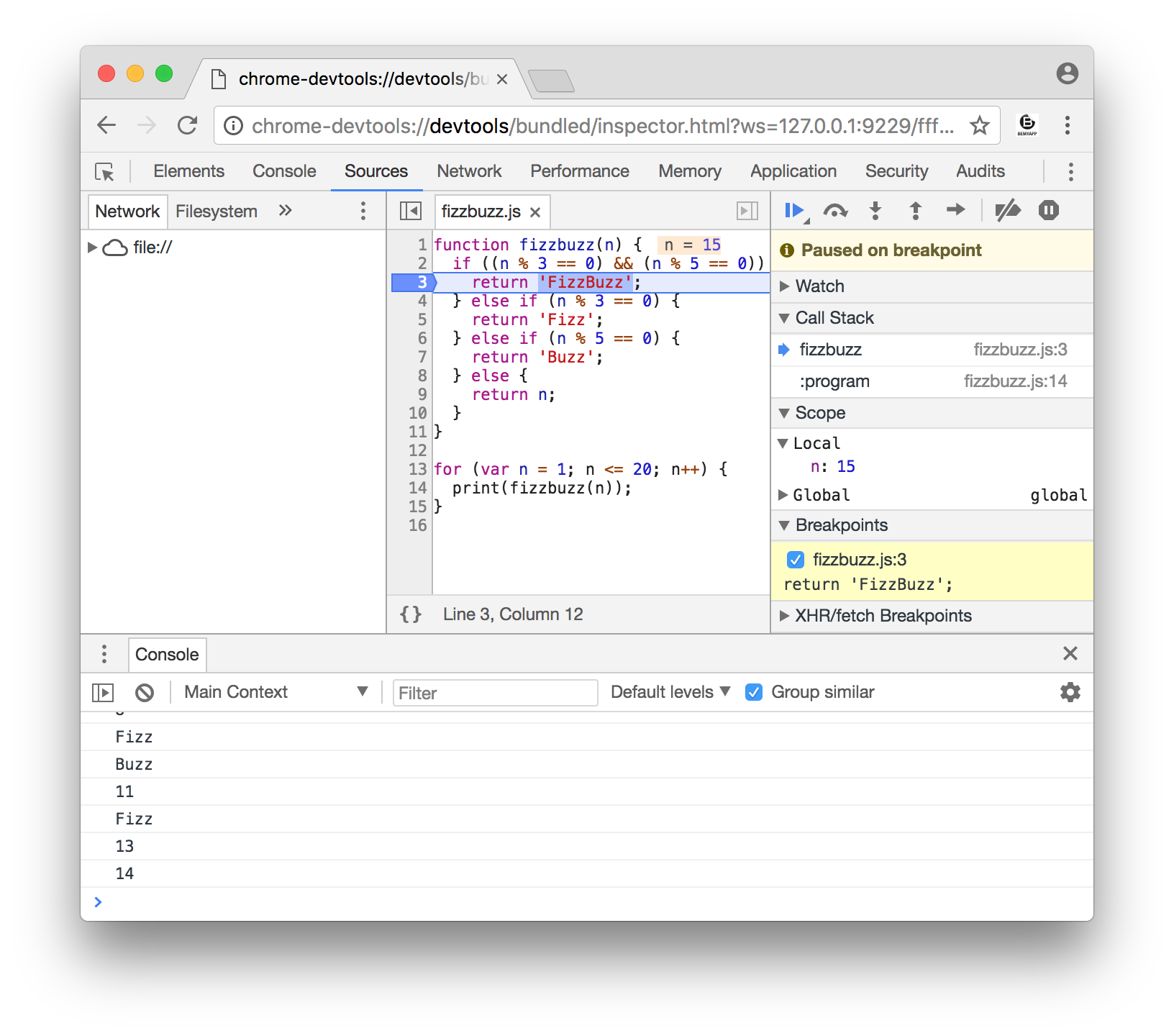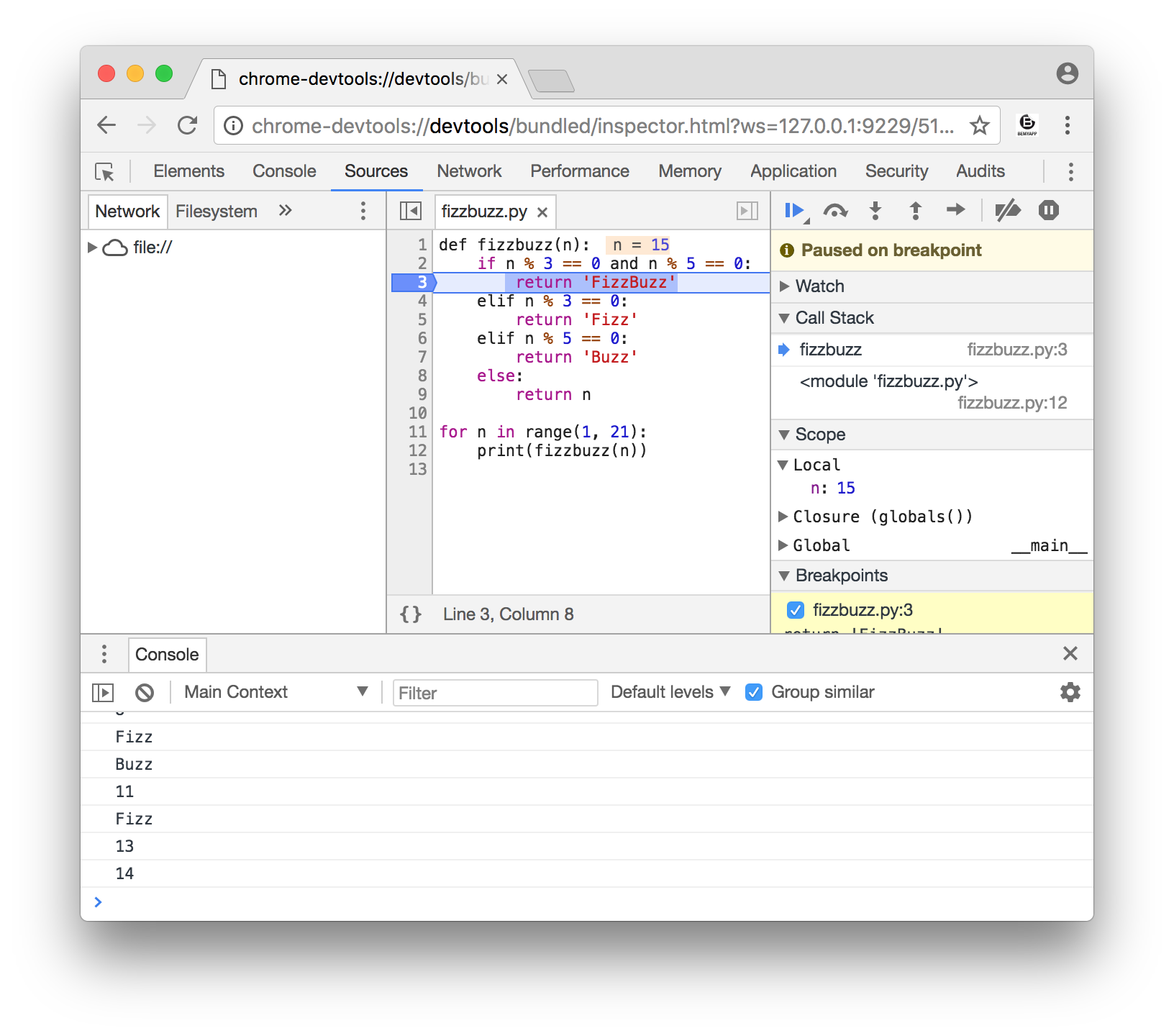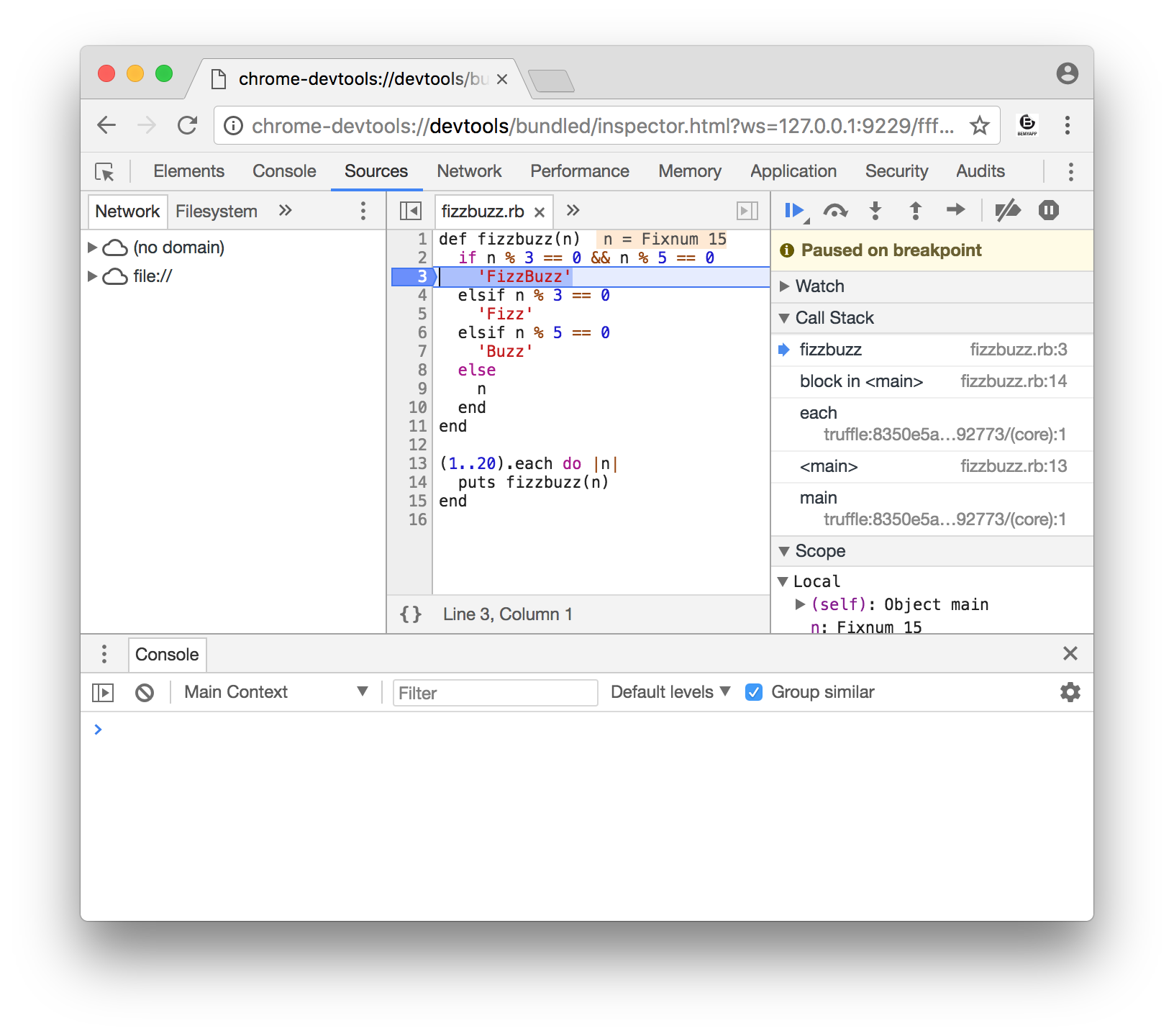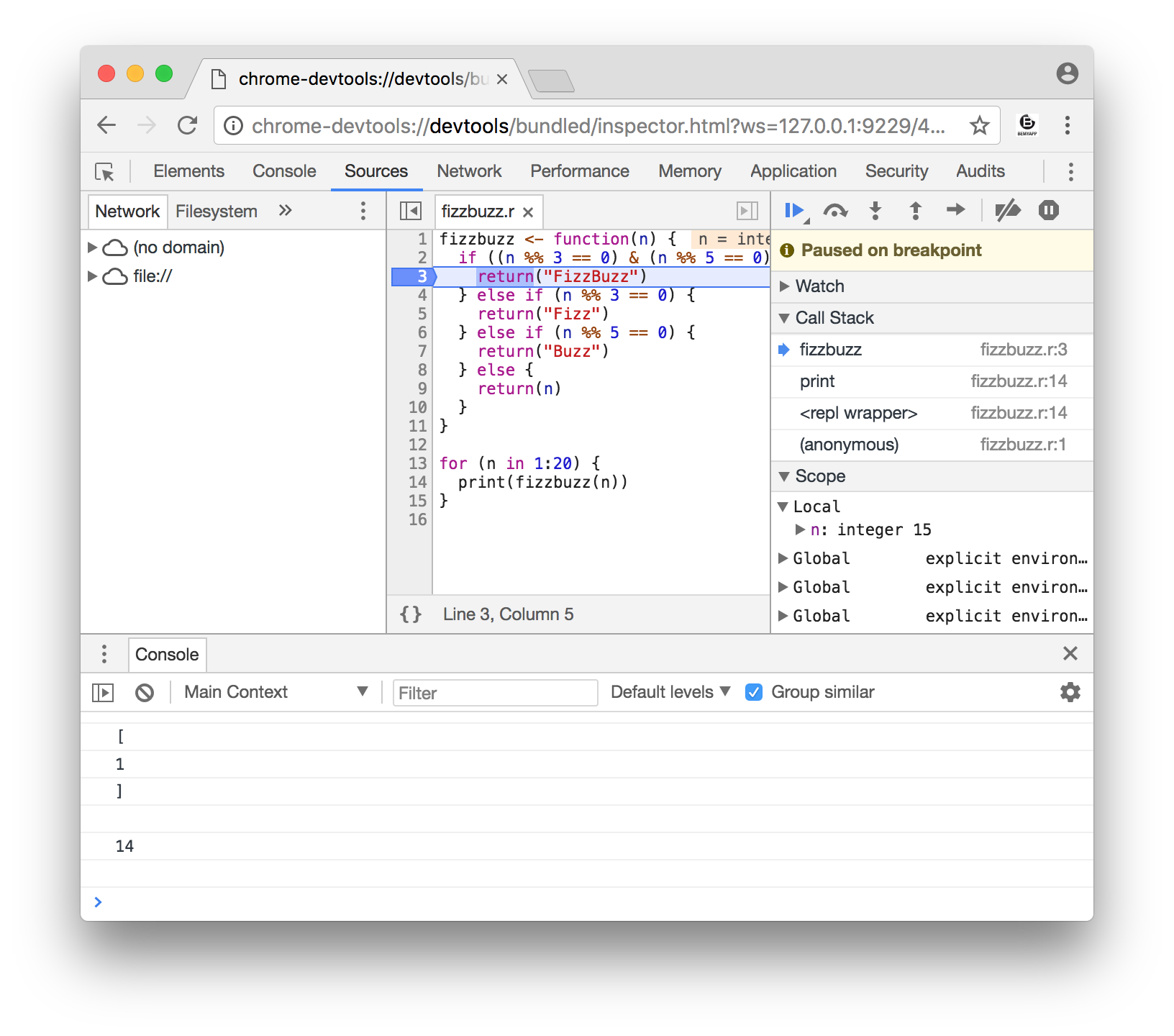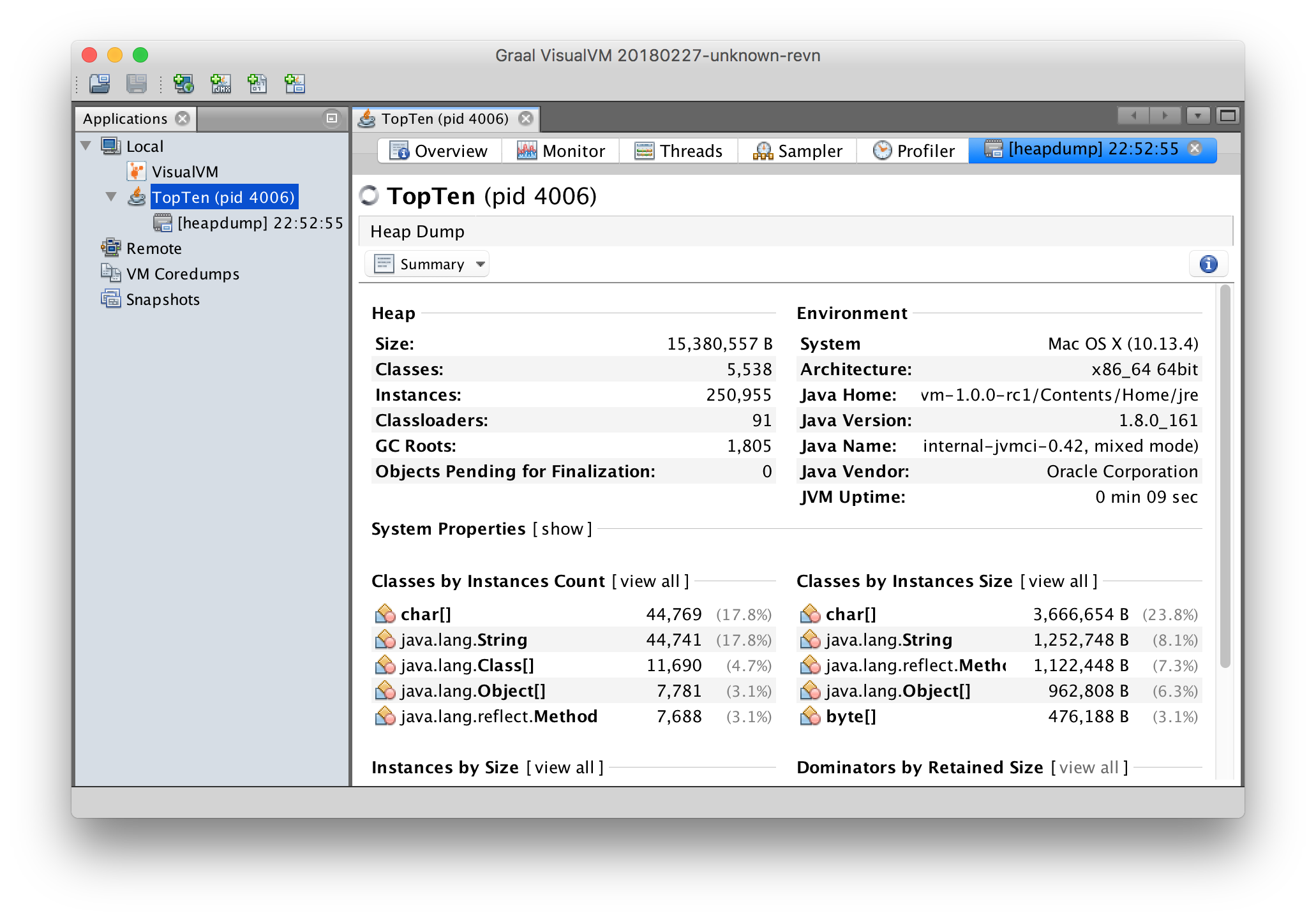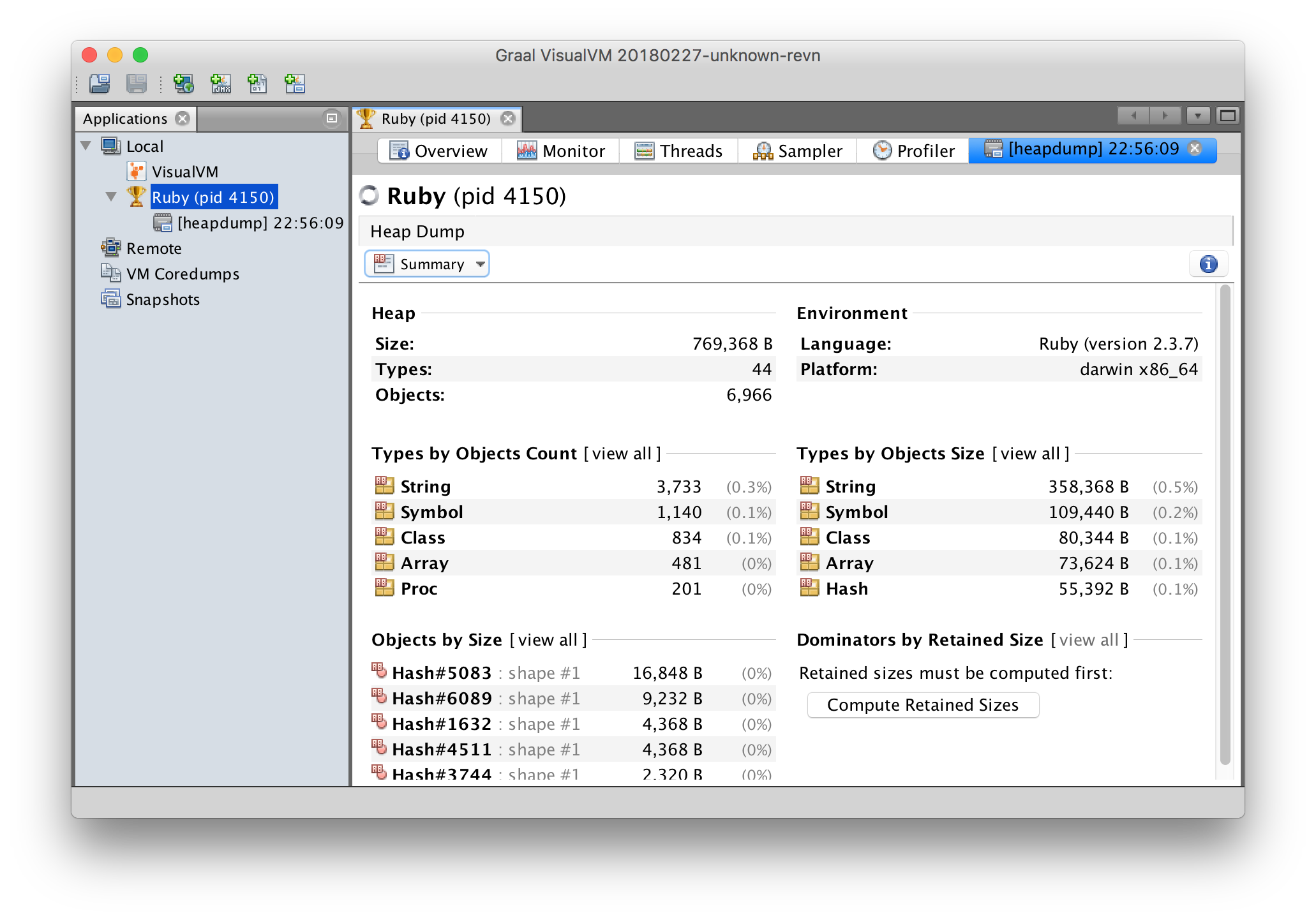There are a lot of different parts to GraalVM, so if you've heard the name before, or even seen some of our talks, there are for sure things that it can do that you don't know about yet. In this article we'll list some of the diverse features of GraalVM and show you what they can do for you.
You can reproduce everything that I'm showing in this article with GraalVM 1.0.0 RC 1, which is available today from https://www.graalvm.org/downloads. I'm using the Enterprise Edition on macOS, but the instructions will also work on Linux as well as with the Community Edition.
Follow along and run these programs while you're reading! The code I'm running on Graal can be cloned from http://github.com/chrisseaton/graalvm-ten-things/.
I've downloaded the Enterprise Edition of GraalVM GraalVM 1.0.0 RC 1 from
https://www.graalvm.org/downloads, and put the programs from it onto my $PATH.
This gives me the Java and JavaScript languages by default.
$ git clone https://github.com/chrisseaton/graalvm-ten-things.git
$ cd foo
$ tar -zxf graalvm-ee-1.0.0-rc1-macos-amd64.tar.gz
# or graalvm-ee-1.0.0-rc1-linux-amd64.tar.gz on Linux
$ export PATH=graalvm-1.0.0-rc1/Contents/Home/bin:$PATH
# or PATH=graalvm-1.0.0-rc1/bin:$PATH on Linux
GraalVM comes with JavaScript included and has a package manager called
gu that lets you install additional languages. I've installed the Ruby, Python
and R languages, which get downloaded from GitHub.
$ gu install -c org.graalvm.ruby
$ gu install -c org.graalvm.python
$ gu install -c org.graalvm.R
Now when you run java or js you'll get the GraalVM versions of those
runtimes.
$ java -version
java version "1.8.0_161"
Java(TM) SE Runtime Environment (build 1.8.0_161-b12)
GraalVM 1.0.0-rc1 (build 25.71-b01-internal-jvmci-0.42, mixed mode)
$ js --version
Graal JavaScript 1.0 (GraalVM 1.0.0-rc1)
The Graal name in the GraalVM comes from the Graal compiler. Graal is one compiler to rule them all, meaning that it's a single implementation of a compiler written as a library which can be used for many different things. For example we use Graal to compile both ahead-of-time and just-in-time, to compile multiple programming languages, and to multiple architectures.
One simple way to use Graal is to use it as your Java JIT compiler.
We'll use this example program, which gives you the top-ten words in a document. It uses modern Java language features like streams and collectors.
import java.io.IOException;
import java.nio.file.Files;
import java.nio.file.Paths;
import java.util.Arrays;
import java.util.function.Function;
import java.util.stream.Collectors;
import java.util.stream.Stream;
public class TopTen {
public static void main(String[] args) {
Arrays.stream(args)
.flatMap(TopTen::fileLines)
.flatMap(line -> Arrays.stream(line.split("\\b")))
.map(word -> word.replaceAll("[^a-zA-Z]", ""))
.filter(word -> word.length() > 0)
.map(word -> word.toLowerCase())
.collect(Collectors.groupingBy(Function.identity(), Collectors.counting()))
.entrySet().stream()
.sorted((a, b) -> -a.getValue().compareTo(b.getValue()))
.limit(10)
.forEach(e -> System.out.format("%s = %d%n", e.getKey(), e.getValue()));
}
private static Stream<String> fileLines(String path) {
try {
return Files.lines(Paths.get(path));
} catch (IOException e) {
throw new RuntimeException(e);
}
}
}GraalVM includes a javac compiler, but it isn't any different from the
standard one for the purposes of this demo, so you could use your system javac
instead if you wanted to.
$ javac TopTen.java
If we run the java command included in GraalVM we'll be automatically using
the Graal JIT compiler - no extra configuration is needed. I'll use the time
command to get the real, wall-clock elapsed time it takes to run the entire
program from start to finish, rather than setting up a complicated
micro-benchmark, and I'll use a large input so that we aren't quibbling about a
few seconds here or there. The large.txt file is 150 MB.
$ make large.txt
$ time java TopTen large.txt
sed = 502701
ut = 392657
in = 377651
et = 352641
id = 317627
eu = 317627
eget = 302621
vel = 300120
a = 287615
sit = 282613
real 0m17.367s
user 0m32.355s
sys 0m1.456s
Graal is written in Java, rather than C++ like most other JIT compilers for Java. We think this allows us to improve it more quickly than existing compilers, with powerful new optimisations such as partial escape analysis that aren't available in the standard JIT compilers for HotSpot. This can make your Java programs run significantly faster.
To run without the Graal JIT compiler to compare, I can use the flag
-XX:-UseJVMCICompiler. JVMCI is the interface between Graal and the JVM. You
could also compare against your standard JVM as well.
$ time java -XX:-UseJVMCICompiler TopTen large.txt
sed = 502701
ut = 392657
in = 377651
et = 352641
id = 317627
eu = 317627
eget = 302621
vel = 300120
a = 287615
sit = 282613
real 0m23.511s
user 0m24.293s
sys 0m0.579s
This shows Graal running our Java program in around three-quarters of the time it takes to run it with a standard HotSpot compiler. In an area where we are used to treating single-digit percentage increases in performance as significant, this is a big-deal.
Twitter are one company using Graal in production today, and they say that for them it is paying off in terms of real money saved. Twitter are using Graal to run Scala applications - Graal works at the level of JVM bytecode so it works for any JVM language.
This is the first way you can use GraalVM - simply as a drop-in better JIT compiler for your existing Java applications.
The Java platform is particularly strong for long-running processes and peak performance, but short-running processes can suffer from longer startup time and relatively high memory usage.
For example, if we run the same application with a much smaller input - around 1
KB instead of 150 MB, then it seems to take an unreasonably long time, and quite
a lot of memory at 60 MB, to run for such a small file. We use -l to print the
memory used as well as time used.
$ make small.txt
$ /usr/bin/time -l java TopTen small.txt # -v on Linux instead of -l
sed = 6
sit = 6
amet = 6
mauris = 3
volutpat = 3
vitae = 3
dolor = 3
libero = 3
tempor = 2
suscipit = 2
0.32 real 0.49 user 0.05 sys
59846656 maximum resident set size
...
GraalVM gives us a tool that solves this problem. We said that Graal is like a
compiler library and it can be used in many different ways. One of those is to
compile ahead-of-time, to a native executable image, instead of compiling
just-in-time at runtime. This is similar to how a conventional compiler like
gcc works.
$ native-image --no-server TopTen
classlist: 1,513.82 ms
(cap): 2,333.95 ms
setup: 3,584.09 ms
(typeflow): 4,642.13 ms
(objects): 3,073.58 ms
(features): 156.34 ms
analysis: 8,059.94 ms
universe: 353.02 ms
(parse): 1,277.02 ms
(inline): 1,412.08 ms
(compile): 10,337.76 ms
compile: 13,776.23 ms
image: 2,526.63 ms
write: 1,525.03 ms
[total]: 31,439.47 ms
This command produces a native executable called topten. This executable isn't
a launcher for the JVM, it doesn't link to the JVM, and it doesn't bundle the
JVM in any way. native-image really does compile your Java code, and any Java
libraries you use, all the way down to simple machine code. For runtime
components like the garbage collector we are running our own new VM called the
SubstrateVM, which like Graal is also written in Java.
If we look at the libraries which topten uses you can see they are only
standard system libraries. We could also move just this one file to a system
which has never had a JVM installed and run it there to verify it doesn't use a
JVM or any other files. It's also pretty small - this executable is less than 6
MB.
$ otool -L topten # ldd topten on Linux
topten:
/System/Library/Frameworks/CoreFoundation.framework/Versions/A/CoreFoundation (compatibility version 150.0.0, current version 1452.23.0)
/usr/lib/libz.1.dylib (compatibility version 1.0.0, current version 1.2.11)
/usr/lib/libSystem.B.dylib (compatibility version 1.0.0, current version 1252.50.4)
$ du -h topten
5.7M topten
If we run the executable we can see that it starts around an order of magnitude faster, and uses around an order of magnitude less memory, than running the same program on the JVM does. It's so fast that you don't notice the time taken when using it at the command line - you don't feel that pause you always get when running a short-running command with the JVM.
$ /usr/bin/time -l ./topten small.txt
sed = 6
sit = 6
amet = 6
mauris = 3
volutpat = 3
vitae = 3
dolor = 3
libero = 3
tempor = 2
suscipit = 2
0.02 real 0.00 user 0.00 sys
4702208 maximum resident set size
...
The native-image tool has some
restrictions
such as all classes having to be available during compilation, and some
limitations around reflection. It has some additional advantages over basic
compilation as well in that static initializers are run during compilation, so
you can reduce the work done each time an application loads.
This is a second way that you can use GraalVM - a way to distribute and run your existing Java programs with a low-footprint and fast-startup. It also frees you from configuration issues such as finding the right jar files at runtime, and allows you to have smaller Docker images.
As well as Java, GraalVM includes new implementations of JavaScript, Ruby, R and Python. These are written using a new language implementation framework called Truffle that makes it possible to implement language interpreters that are both simple and high performance. When you write a language interpreter using Truffle, Truffle will automatically use Graal on your behalf to give you a JIT compiler for your language. So Graal is not only a JIT compiler and ahead-of-time native compiler for Java, it can also be a JIT compiler for JavaScript, Ruby, R and Python.
The languages in GraalVM aim to be drop-in replacements for your existing languages. For example we can install a Node.js module:
$ npm install --global color
...
+ color@3.0.0
added 6 packages in 14.156s
We can write a little program using this module to convert an RGB HTML color to HSL:
var Color = require('color');
process.argv.slice(2).forEach(function (val) {
print(Color(val).hsl().string());
});Then we can run that in the usual way:
$ node color.js '#42aaf4'
hsl(204.89999999999998, 89%, 60.8%)
The languages in GraalVM work together - there's an API which lets you run code from one language in another. This lets you write polyglot programs - programs written in more than one language.
You might want to do this because you want to write the majority of your application in one language, but there's a library in another language's ecosystem that you'd like to use. For example, say we'd like to write our application for converting a CSS color name to hexadecimal in Node.js, but we want to use a Ruby color library instead to do the conversion.
var express = require('express');
var app = express();
color_rgb = Polyglot.eval('ruby', `
require 'color'
Color::RGB
`);
app.get('/css/:name', function (req, res) {
color = color_rgb.by_name(req.params.name).html()
res.send('<h1 style="color: ' + color + '" >' + color + '</h1>');
});
app.listen(8080, function () {
console.log('serving at http://localhost:8080')
});We specify some Ruby code to run as a string, but notice that we don't do much
in it - we just require the libraries, and then return a Ruby object. The way to
use this object from Ruby is normally to say Color::RGB.by_name(name).html. If
you look at how color_rgb is used further down by JavaScript, you can see that
actually we're calling these methods from JavaScript, even though they are Ruby
objects and methods, and we pass them a JavaScript string, and we concatenate
the result, which is a Ruby string, with other JavaScript strings.
We'll install both our Ruby and JavaScript dependencies.
$ gem install color
Fetching: color-1.8.gem (100%)
Successfully installed color-1.8
1 gem installed
$ npm install express
+ express@4.16.2
updated 1 package in 10.393s
We then need to run node with a couple of options: --polyglot to say we want
access to other languages, and --jvm because the node native image by
default doesn't include more than JavaScript.
$ node --polyglot --jvm color-server.js
serving at http://localhost:8080
Then open http://localhost:8080/css/aquamarine, or some other colour name, as normal in your browser.
Let's try a larger example using more languages and modules.
JavaScript doesn't have a great solution for arbitrarily-large integers. I found
several modules like big-integer but these are all inefficient as they store
components of the number as JavaScript floating point numbers. Java's
BigInteger class is more efficient so let's use that instead to do some
arbitrarily-large integer arithmetic.
JavaScript also doesn't include any built-in support for drawing graphs, where R
does include excellent support for this. Let's use R's svg module to draw a
3D scatter plot of a trigonometric function.
In both cases we can use GraalVM's polyglot API, and we can just compose the results from these other languages into JavaScript.
const express = require('express')
const app = express()
const BigInteger = Java.type('java.math.BigInteger')
app.get('/', function (req, res) {
var text = 'Hello World from Graal.js!<br> '
// Using Java standard library classes
text += BigInteger.valueOf(10).pow(100)
.add(BigInteger.valueOf(43)).toString() + '<br>'
// Using R interoperability to create graphs
text += Polyglot.eval('R',
`svg();
require(lattice);
x <- 1:100
y <- sin(x/10)
z <- cos(x^1.3/(runif(1)*5+10))
print(cloud(x~y*z, main="cloud plot"))
grDevices:::svg.off()
`);
res.send(text)
})
app.listen(3000, function () {
console.log('Example app listening on port 3000!')
})$ node --jvm --polyglot polyglot.js
Open http://localhost:3000/ in your browser to see the result.
That's the third thing we can do with GraalVM - run programs written in multiple languages and use modules from those languages together. We think of this as a kind of commoditisation of languages and modules - you can use whichever language you think is best for your problem at hand, and whichever library you want, no matter which language it came from.
Another language that GraalVM supports is C. GraalVM can run C code in the same way that it runs languages like JavaScript and Ruby.
What GraalVM actually supports is running the output of the LLVM toolchain -
LLVM bitcode - rather than directly supporting C. This means you can use your
existing tooling with C, and also other languages that can output LLVM, such as
C++, Fortran, and potentially other languages in the future. To make things
simple for a demo I'm running a special single-file
version of
gzip, maintained by Stephen McCamant. It's
just the gzip source code and the autoconf configuration concatenated into
one file for simplicity. I've also had to patch a couple of things to make it
work on macOS and with clang, but not to get it working on GraalVM.
Then we can compile using standard clang (the LLVM C compiler), and we want it
to compile to LLVM bitcode, not native assembly, because that's what GraalVM can
run. I'm using clang 4.0.1.
$ clang -c -emit-llvm gzip.c
And then we run this directly using GraalVM using the lli command (LLVM
bitcode interpreter). Let's try compressing a file using my system gzip, and
then decompress using gzip running on GraalVM.
$ cat small.txt
Lorem ipsum dolor sit amet...
$ gzip small.txt
$ lli gzip.bc -d small.txt.gz
$ cat small.txt
Lorem ipsum dolor sit amet...
The implementations of Ruby and Python in GraalVM use this technique to run C extensions for these languages. This means that you can run C extensions inside the VM, and it allows us to maintain high performance even while supporting these legacy native extension interfaces.
This is a fourth thing you can do with the GraalVM - run programs written in native languages like C and C++, and also run C extensions to languages like Python and Ruby, which existing JVM implementations like JRuby are not able to do.
If you program in Java you're probably used to very high quality tools like IDEs, debuggers and profilers. Not all languages have these kind of tools, but you get them if you use a language in GraalVM.
All the GraalVM languages (except for Java at the moment) are implemented using the common Truffle framework. This allows us to implement functionality like debuggers once and have it available to all languages.
To try this we'll write a basic FizzBuzz program, because it prints things to the screen and it has clear branches that are only taken on some iterations, so we can set some breakpoints more easily. We'll start with a JavaScript implementation.
function fizzbuzz(n) {
if ((n % 3 == 0) && (n % 5 == 0)) {
return 'FizzBuzz';
} else if (n % 3 == 0) {
return 'Fizz';
} else if (n % 5 == 0) {
return 'Buzz';
} else {
return n;
}
}
for (var n = 1; n <= 20; n++) {
print(fizzbuzz(n));
}We can run this JavaScript program as normal using GraalVM, using the js
executable.
$ js fizzbuzz.js
1
2
Fizz
4
Buzz
Fizz
...
We can also run the program with the flag --inspect. This will give us a link
to open in Chrome and will pause the program in the debugger.
$ js --inspect fizzbuzz.js
Debugger listening on port 9229.
To start debugging, open the following URL in Chrome:
chrome-devtools://devtools/bundled/inspector.html?ws=127.0.0.1:9229/6c478d4e-1350b196b409
...
We can then set a breakpoint on the FizzBuzz line and then continue execution.
When it breaks we'll see the value of n, and can continue again, or explore
the rest of the debugging interface.
The Chrome debugger is usually used with JavaScript, but there's nothing special about JavaScript in GraalVM. This flag is also available and working in our implementations of Python, Ruby and R. I won't show you the source of each program, but you run them in exactly the same way, and get the same Chrome debugger interface to each.
$ graalpython --jvm --inspect fizzbuzz.py
$ ruby --inspect fizzbuzz.rb
$ Rscript --inspect fizzbuzz.r
Another tool that you may be familiar with using already from Java is VisualVM. It gives you a user interface which you can connect to a running JVM on your machine or somewhere over a network to inspect various aspects such as how it is using memory and threads.
GraalVM includes VisualVM with the standard jvisualvm command.
$ jvisualvm &> /dev/null &
If we run it while we run our Java TopTen application from before, we can
watch the memory use over time, or we can do something like take a heap dump and
inspect what kind of objects we have using memory in our heap.
$ java TopTen large.txt
I've written this Ruby program to generate some garbage over time.
require 'erb'
x = 42
template = ERB.new <<-EOF
The value of x is: <%= x %>
EOF
loop do
puts template.result(binding)
endIf you run a standard JVM language, like JRuby, with VisualVM you'll be disappointed in that you'll see the underlying Java objects, rather than any information about your language's objects.
If we use the GraalVM version of Ruby instead, VisualVM will recognise the Ruby
objects themselves. We need to use the --jvm command to use VisualVM, as it
doesn't support the native version of Ruby.
$ ruby --jvm render.rb
We can see the same heap view dump of underyling Java objects if we want to, or under Summary we can select Ruby Heap and see proper Ruby objects instead.
The Truffle framework is a kind of nexus for languages and tools. If you program your languages using Truffle, and you program your tools like this debugger against Truffle's tool API, then each tool works with each language, and you only have to write the tool once.
So the fifth way that you can use GraalVM is as a platform to get high quality tooling for languages which don't always have the support behind them to build bespoke tools like the Chrome Debugger or VisualVM.
As well as being usable as standalone language implementations, and together in
a polyglot use case, these languages and tools can also be embedded in your Java
application. A new org.graalvm.polyglot API lets you load and run code in
other languages and to use values from them.
import org.graalvm.polyglot.Context;
import org.graalvm.polyglot.Value;
public class ExtendJava {
public static void main(String[] args) {
String language = "js";
try (Context context = Context.newBuilder().allowNativeAccess(true).build()) {
for (String arg : args) {
if (arg.startsWith("-")) {
language = arg.substring(1);
} else {
Value v = context.eval(language, arg);
System.out.println(v);
}
}
}
}
}If you use the javac and java commands from GraalVM, the imports
org.graalvm... will already be on your classpath, so you can compile and run
this without any extra flags.
$ javac ExtendJava.java
$ java ExtendJava '14 + 2'
16
$ java ExtendJava -js 'Math.sqrt(14)'
3.7416573867739413
$ java ExtendJava -python '[2**n for n in range(0, 8)]'
[1, 2, 4, 8, 16, 32, 64, 128]
$ java ExtendJava -ruby '[4, 2, 3].sort'
[2, 3, 4]
These versions of the languages are the same high-performance polyglot versions
that you get from using the commands like node and ruby as the GraalVM
executables.
This is a sixth way you can use GraalVM - as a single interface to embed many different languages in your Java application. The polyglot API allows you to take guest language objects and use them as Java interfaces and other sophisticated interoperability.
GraalVM already includes one native library built like this - it's a library that lets you run code written in any GraalVM language from native applications. JavaScript runtimes like V8, and Python interpreters like CPython, are often embeddable meaning that they can be linked as a library into another application. GraalVM lets you use any language in an embedded context, by linking to this one polyglot embedding library.
The library is already built when you get GraalVM, but by default it only includes the builtin language JavaScript. You can rebuild the polyglot library to include other languages using the command below. This does take a few minutes, so you may want to just experiment with JavaScript if you're following along.
$ graalvm-1.0.0-rc1/Contents/Home/jre/lib/svm/bin/rebuild-images libpolyglot
We can write a simple C program that runs commands in any GraalVM language
passed on the command line. We're going to be doing the equivalent of our
ExtendJava example from above, but with C as the host language.
#include <stdlib.h>
#include <stdio.h>
#include <polyglot_api.h>
int main(int argc, char **argv) {
graal_isolate_t *isolate = NULL;
graal_isolatethread_t *thread = NULL;
if (graal_create_isolate(NULL, &isolate) != 0 || (thread = graal_current_thread(isolate)) == NULL) {
fprintf(stderr, "initialization error\n");
return 1;
}
poly_context context = NULL;
if (poly_create_context(thread, NULL, 0, &context) != poly_ok) {
fprintf(stderr, "initialization error\n");
return 1;
}
char* language = "js";
for (int n = 1; n < argc; n++) {
if (argv[n][0] == '-') {
language = &argv[n][1];
} else {
poly_value result = NULL;
if (poly_context_eval(thread, context, language, "unicalc", argv[n], &result) != poly_ok) {
fprintf(stderr, "eval error\n");
return 1;
}
char buffer[1024];
size_t length;
if (poly_value_to_string_utf8(thread, result, buffer, sizeof(buffer), &length) != poly_ok) {
fprintf(stderr, "to string error\n");
return 1;
}
buffer[length] = '\0';
printf("%s\n", buffer);
poly_destroy_handle(thread, result);
}
}
return 0;
}We can then compile and run that using our system C compiler and link to the native polyglot library in GraalVM. Again, it doesn't need a JVM.
$ clang -Igraalvm-1.0.0-rc1/Contents/Home/jre/lib/polyglot -rpath graalvm-1.0.0-rc1/Contents/Home -Lgraalvm-1.0.0-rc1/Contents/Home/jre/lib/polyglot -lpolyglot extendc.c -o extendc
$ otool -L extendc
extendc:
@rpath/jre/lib/polyglot/libpolyglot.dylib (compatibility version 0.0.0, current version 0.0.0)
/usr/lib/libSystem.B.dylib (compatibility version 1.0.0, current version 1252.50.4)
$ ./extendc '14 + 2'
16
$ ./extendc -js 'Math.sqrt(14)'
3.7416573867739413
$ ./extendc -python '[2**n for n in range(0, 8)]'
[1, 2, 4, 8, 16, 32, 64, 128]
This a seventh thing you can do with the GraalVM - use a single library in your native application to embed any GraalVM language.
Java has a great ecosystem of many very high quality libraries, which often aren't available in other ecosystems, including native applications as well as other managed languages. If you wanted to use a Java library from a native application you could embed the JVM but this gets very large and complicated very quickly.
GraalVM lets you take Java library, either off-the-shelf or one you've written yourself, and compile it to a standalone native library for use from other native languages. As with our native compilation before, they don't require a JVM to run.
I wrote an application that uses the excellent Apache SIS geospatial library to calculate the great-circle distance between two points on Earth. I used SIS 0.8 which I downloaded separately from http://sis.apache.org/ and extracted the jar from.
import org.apache.sis.distance.DistanceUtils;
public class Distance {
public static void main(String[] args) {
final double aLat = Double.parseDouble(args[0]);
final double aLong = Double.parseDouble(args[1]);
final double bLat = Double.parseDouble(args[2]);
final double bLong = Double.parseDouble(args[3]);
System.out.printf("%f km%n", DistanceUtils.getHaversineDistance(aLat, aLong, bLat, bLong));
}
}We can compile this as normal, and then use it to work out the distance between London (latitude 51.507222, longitude -0.1275) and New York (40.7127, -74.0059).
$ javac -cp sis.jar -parameters Distance.java
$ java -cp sis.jar:. Distance 51.507222 -0.1275 40.7127 -74.0059
5570.25 km
We can compile that to a native executable, as we did with our topten program.
$ native-image --no-server -cp sis.jar:. Distance
...
$ ./distance 51.507222 -0.1275 40.7127 -74.0059
5570.25 km
We can also build this as a native shared library, instead of an executable. To
do that we declare one or more methods as @CEntryPoint.
...
import org.graalvm.nativeimage.IsolateThread;
import org.graalvm.nativeimage.c.function.CEntryPoint;
public class Distance {
...
@CEntryPoint(name = "distance")
public static double distance(IsolateThread thread,
double a_lat, double a_long,
double b_lat, double b_long) {
return DistanceUtils.getHaversineDistance(a_lat, a_long, b_lat, b_long);
}
...
}We don't need to change our javac command line because GraalVM automatically
puts these new APIs onto the classpath. We can then compile to a shared
library, and an automatically generated header file.
$ native-image --no-server -cp sis.jar:. -H:Kind=SHARED_LIBRARY -H:Name=libdistance
$ otool -L libdistance.dylib # .so on Linux
libdistance.dylib:
.../libdistance.dylib (compatibility version 0.0.0, current version 0.0.0)
/System/Library/Frameworks/CoreFoundation.framework/Versions/A/CoreFoundation (compatibility version 150.0.0, current version 1452.23.0)
/usr/lib/libz.1.dylib (compatibility version 1.0.0, current version 1.2.11)
/usr/lib/libSystem.B.dylib (compatibility version 1.0.0, current version 1252.50.4)
$ du -h libdistance.dylib
4.8M libdistance.dylib
We can then write a little C program to use the library. The interface to our native library does have a little ceremony - because the VM needs to manage a heap, threads, a garbage collector and other services, we need to create an instance of the system, and tell it about our main thread.
#include <stdlib.h>
#include <stdio.h>
#include <libdistance.h>
int main(int argc, char **argv) {
graal_isolate_t *isolate = NULL;
graal_isolatethread_t *thread = NULL;
if (graal_create_isolate(NULL, &isolate) != 0 || (thread = graal_current_thread(isolate)) == NULL) {
fprintf(stderr, "initialization error\n");
return 1;
}
double a_lat = strtod(argv[1], NULL);
double a_long = strtod(argv[2], NULL);
double b_lat = strtod(argv[3], NULL);
double b_long = strtod(argv[4], NULL);
printf("%f km\n", distance(thread, a_lat, a_long, b_lat, b_long));
return 0;
}We compile this with our standard system tools and can run our executable (set
LD_LIBRARY_PATH=. on Linux).
$ clang -I. -L. -ldistance distance.c -o distance
$ otool -L distance
distance:
/Users/chrisseaton/Documents/graalvm-blog-post/libdistance.dylib (compatibility version 0.0.0, current version 0.0.0)
/usr/lib/libSystem.B.dylib (compatibility version 1.0.0, current version 1252.0.0)
$ ./distance 51.507222 -0.1275 40.7127 -74.0059
5570.25 km
This is an eighth thing we can do with GraalVM - compile Java code to a native library that we can then use in native applications without using a full JVM.
One application of the polyglot library for embedding languages is in the Oracle Database. We've used it to create the Oracle Database Multilingual Engine (MLE) which includes support for using GraalVM languages and modules from SQL.
For example, say that we have a frontend already written in JavaScript, and
we're doing some validation of email addresses using the JavaScript module
validator. If we have some logic for the same application in the database
written in SQL or PLSQL we'd like to be able to use exactly the same validator
so that the results are the same.
You can download the MLE as Docker image from https://oracle.github.io/oracle-db-mle/releases/0.2.7/docker/. Then load it into Docker.
$ docker load --input mle-docker-0.2.7.tar.gz
We want to run the image, and then when it's finished loading, which can take a few minutes, execute a Bash terminal in it.
$ docker run mle-docker-0.2.7
$ docker ps
$ docker exec -ti <container_id> bash -li
If we can run the interactive SQL tool, sqlplus, in this Bash terminal to
connect to the database then it's up and running.
$ sqlplus scott/tiger@localhost:1521/ORCLCDB
Now, still in the Bash terminal running in Docker, we install that validator
module and then we run a command dbjs to deploy it into the database. Then
we run sqlplus again.
$ npm install validator
$ npm install @types/validator
$ dbjs deploy -u scott -p tiger -c localhost:1521/ORCLCDB validator
$ sqlplus scott/tiger@localhost:1521/ORCLCDB
We can now use the validator module as part of an SQL expression.
SQL> select validator.isEmail('hello.world@oracle.com') from dual;
VALIDATOR.ISEMAIL('HELLO.WORLD@ORACLE.COM')
-------------------------------------------
1
SQL> select validator.isEmail('hello.world') from dual;
VALIDATOR.ISEMAIL('HELLO.WORLD')
--------------------------------
0
This is our ninth thing that you can do with GraalVM - run GraalVM languages inside the Oracle Database so that you can use the same logic from your frontends or backends inside your Database logic, instead of always having to pull it out of the database to an application server.
Oracle Labs and our academic collaborators have been able to make new high-performance implementations of JavaScript, R, Ruby, Python and C with a relatively small team because we have developed the Truffle framework to make this easy.
Truffle is a Java library that helps you to write an abstract syntax tree (AST) interpreter for a language. An AST interpreter is probably the simplest way to implement a language, because it works directly on the output of the parser and doesn't involve any bytecode or conventional compiler techniques, but it is often slow. We have therefore combined it with a technique called partial evaluation, which allows Truffle to use Graal to automatically provide a just-in-time compiler for your language, just based on your AST interpreter.
You can use Truffle to implement your own new programming language, to create a high-performance implementation of an existing programming language, or to implement a domain specific language. We talk a lot about the details of Truffle and Graal in our project, but we often forget to mention that Truffle is the easy way to implement a language. And you get features like the debugger automatically. Anyone who's done just an undergraduate course in programming language implementation should have the basic skills needed. Oracle Labs implemented a basic version of Ruby faster than any previous efforts with just one intern over a few months.
We don't have space here to show a complete language, even a tiny one, but
SimpleLanguage is an executable
tutorial of how to create your own language using Truffle, based around a
simplified JavaScript-style language. For example see the
implementation
of the if statement.
Other languages written using Truffle by people outside of Oracle Labs includes a Smalltalk variant, a Newspeak variant, and a Lisp variant. The Lisp example has a tutorial you can follow.
GraalVM enables a very diverse set of new functionality - it's a platform on which you can build more powerful languages and tools and put them into more environments. It lets you pick the language and modules you want no matter where the program is running or which languages you're using already.
To try GraalVM go to https://www.graalvm.org/. There are links to downloads and documentation there, and more examples like we've shown in this blog post.
Try following along with the instructions here, and try adapting them to see what else you can do. Let us know how you're experimenting with GraalVM in your application and send us any feedback @ChrisGSeaton or @shelajev.
